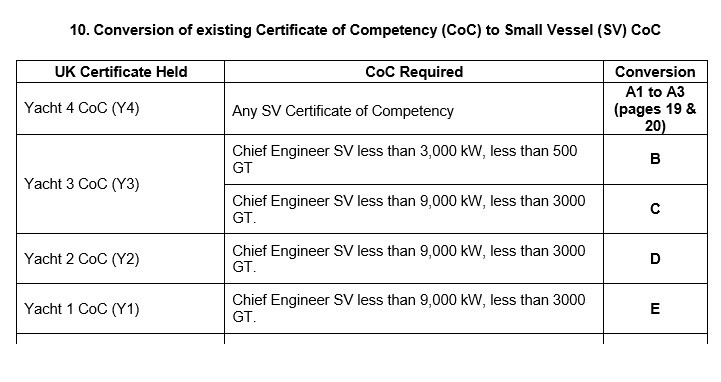Advantages:
Moving up the ladder once in the new system is faster in most cases and the new S.V. courses and exams are more relevant.
A summary of the advantages of converting your CoC are as follows:
1. Y2
Advanced Hotel Services has been removed from the New S.V. syllabus, so current Y3 CoC holders transferring to the new S.V Chief Engineer 9000 kW is quicker and cheaper (conversion C page 21, MIN 524).
2. A fast track route now exists (conversion (A3) page 20, MIN 524) from S.V. Second Engineer to S.V. Chief Engineer 9000 kW 3000GT.
3. There are no offshore mileage limitations for the new Small Vessel CoC's, unlike the current complex manning scales system.
4. The new S.V. CoC's are interchangeable with other Small Vessel Sectors such as: Fishing Vessels, Yachts, Tugs, Workboats, Standby, Seismic Survey, Oceanographic Research Vessels and Government Patrol Vessels.
5. The new S.V. CoC should be recognised by all STCW signatory nations.
6. Each sea service day underway will count as 1.5 days whilst holding an S.V. CoC for Yachts only.
7. There are new routes to the Merchant Navy higher power tickets routes 11 - 11.4 on pages 30 and 31 of MIN 524.


